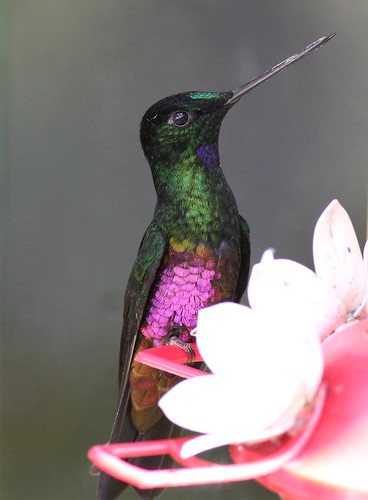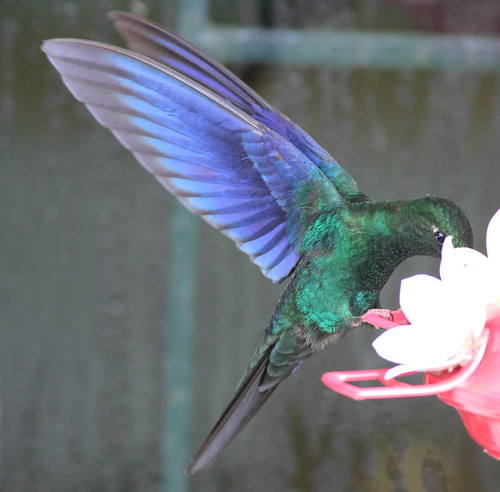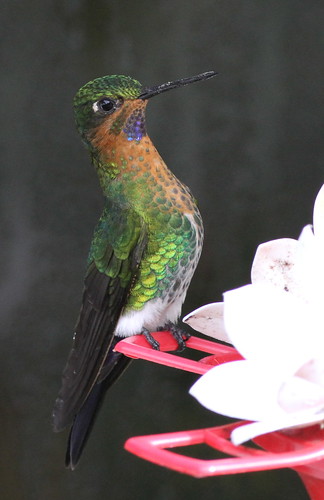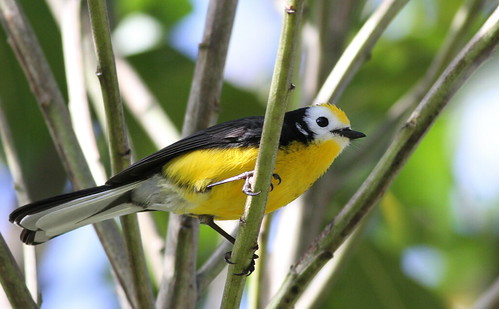Golden-fronted Whitestart (of the white-faced population), Chingaza National Park
After Laguna Pedropalo, we found ourselves back at the bus station in Bogotá with two options for where to go next. Either we could head to a place called Monterredondo for the very localized and rare Cundinamarca Antpitta, but not much else there, or we could go to Parque Nacional Chingaza, a high elevation spot with elfin forest and paramo. Unsure of which alternative was best, we gave Diego Calderón, a local expert guide, a call. Diego was a huge help and gave us lots of information about both locations, both logistical and bird related, and we decided to go to Chingaza, basing out of the town of La Calera, a town that mostly caters to weekend vacationers from Bogotá.
One bus later we were in La Calera, and the town was completely packed with people, almost certainly due to the fact that it was a Sunday, and a beautiful one at that. Luckily there was still space left at what seemed to be the only hotel in town, and it was a hotel with wifi to boot! The big thing about Chingaza is that it isn't accessible by public transport, so we had to find some form of private transportation for the following day. By asking the hotel owner, an interesting man who spoke Arabic and some English, we arranged to be driven by his cousin the following day, in what ended up being a small truck-like vehicle.
Chingaza was a fantastic place, we were the only people up there for almost the entire day, and the birding was great. Lots of near-endemic species to Colombia occur from that area to just over the border with Venezuela, and Chingaza is the most accessible spot in the world for many of them. Highlights included Brown-breasted Parakeet, Matorral Tapaculo, Bronze-tailed Thornbill, and Blue-throated Starfrontlet (a female carrying nest material - cool!).
The most unfortunate part of the day for me was missing Bearded Helmetcrest, one of my most wanted birds for the whole trip. This species of hummingbird likes to feed on a certain kind of flowers, locally called frailejones, and I found a large patch of those that I thought looked good, and decided to stake them out. After a little while of waiting, Andrew walked off to go record the local subspecies of Tawny Antpitta, a different sounding and looking race, quite interesting. While he was trying to find the antpitta, of course he sees two female helmetcrests, while I'm sitting at the big flower flower patch, without any trace of helmets or crests. So after that, I knew they were out there, and I hadn't had them yet, and that made it all the more frustrating. To cut an even longer story relatively short, I walked for about an hour across multiple ridges and valleys, all through perfect habitat, and never saw one. Ah well, can't win them all. At this point in the day it started to rain, and so we had to cut short our time at this great place.
Back in La Calera, our plans for the next morning were to head to a nearby spot with hummingbird feeders, particularly to see Blue-throated Starfrontlet, an absolutely stunning hummingbird. We had luckily seen a female the day before, but we were hoping to see males at this location, thanks once again to the info given to us by Diego. We had a great time in our morning there at Acua Monte, seeing multiple starfrontlets and a good overall hummingbird show. Some pictures can be seen below from the feeders there.

Blue-throated Starfrontlet, Acua Monte feeders

Great Sapphirewing, Acua Monte feeders

Glowing Puffleg, Acua Monte feeders
Next stop is into the Amazon, and Mitú!


No comments:
Post a Comment